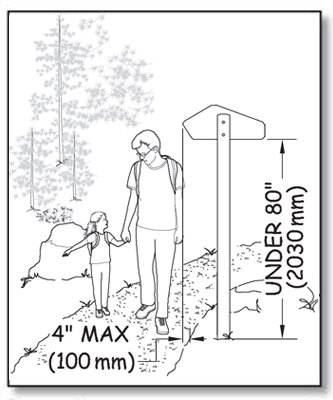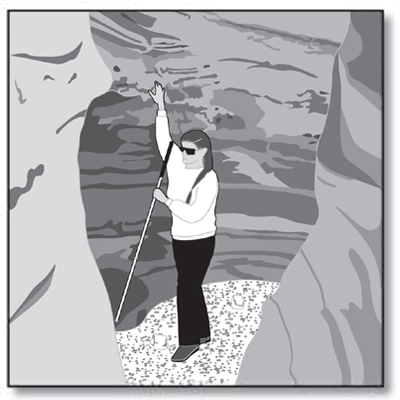Protruding Objects and Trails
Objects that extend into the travel way of a trail from the side or from overhead can be hazardous to people who are paying more attention to their companions than the travel route (figure 136), as well as to people who are blind or have low vision. Protruding objects are defined as constructed features such as signs that extend into the clear width area of a trail, resting interval, or passing space between 27 inches (685 millimeters) and 80 inches (2,030 millimeters) above the travel surface. Do not allow protruding objects to extend into the clear width area more than 4 inches (100 millimeters).

Figure 136—Constructed objects must not extend over the trail more than 4 inches (100 millimeters) if they are between 27 inches (685 millimeters) and 80 inches (2,030 millimeters) above the travel surface.
Accessibility guidelines do not consider natural elements such as tree branches and rock formations to be protruding objects. However, you should follow the specific Trail Management Objectives for each trail that address protrusions, obstacles, and clearing widths and heights. For instance, trails should generally not be routed too close to rock overhangs. Clearing limits for trail construction and maintenance usually require that brush, limbs, trees, and logs be cut back a foot or more from the edge of the trail. However, the trail maintenance cycle may be several years for some trails, and vegetation may encroach on the trail during the interim. The protruding object requirement recognizes that it may not always be practicable to control vegetation, but it is always practicable to place constructed features where they won't interfere with hikers. It also recognizes situations where rock ledges are unavoidable or where trails pass through caves (figure 137).

Figure 137—Protruding object requirements do not apply to natural features, such as caves in undeveloped areas.

User Comments/Questions
Add Comment/Question